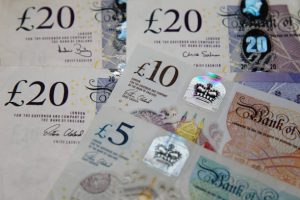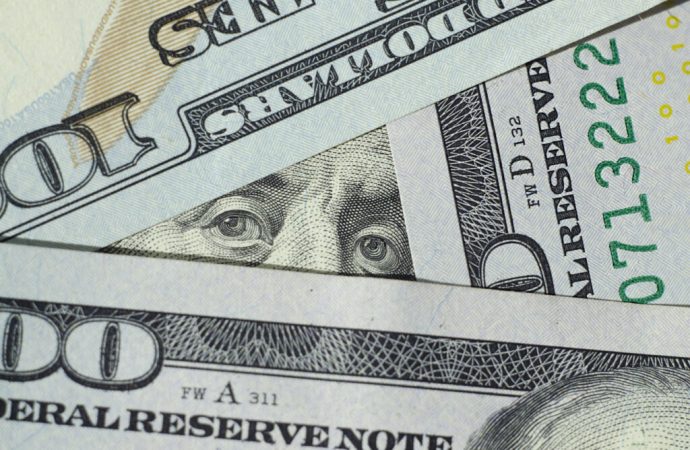Inflation has become one of the most pressing economic issues in 2024, affecting individuals, businesses, and governments around the world. As prices for goods and services continue to rise, consumers are increasingly finding it difficult to maintain their usual spending habits. This article will explore how inflation is impacting consumer spending, what factors are driving
Inflation has become one of the most pressing economic issues in 2024, affecting individuals, businesses, and governments around the world. As prices for goods and services continue to rise, consumers are increasingly finding it difficult to maintain their usual spending habits. This article will explore how inflation is impacting consumer spending, what factors are driving these changes, and what the future may hold.
Understanding Inflation in 2024
Inflation refers to the general increase in prices of goods and services in an economy over time, which results in a decline in purchasing power. In 2024, inflation rates have surged to levels not seen in decades, driven by a combination of supply chain disruptions, rising energy costs, and the lingering effects of the global pandemic. As inflation climbs, consumers are forced to make difficult decisions regarding how to allocate their limited resources.
Inflation is measured by tracking changes in the price index, which monitors the cost of a basket of goods and services. When inflation is high, the cost of living increases, and consumers must spend more to purchase the same items. This leads to reduced discretionary spending and changes in overall consumption patterns.
How Inflation Impacts Consumer Spending Behavior
Inflation affects consumer spending in a variety of ways, but the most immediate consequence is the reduction in purchasing power. As the cost of everyday items like groceries, fuel, and housing rise, consumers must adjust their budgets accordingly. Here are some of the key ways inflation is shaping consumer spending behavior in 2024:
1. Reduced Discretionary Spending
As inflation continues to rise, consumers are cutting back on discretionary spending. This includes expenditures on non-essential items such as entertainment, dining out, and luxury goods. Many consumers are prioritizing basic needs over indulgences as they attempt to stretch their shrinking budgets. For example, families that once spent on vacations or leisure activities may now find themselves forgoing such experiences due to increased living costs.
2. Shift to Cheaper Alternatives
In response to inflation, many consumers are seeking cheaper alternatives to their usual purchases. This includes switching from name-brand products to generic ones, shopping at discount stores, and opting for smaller package sizes. Consumers are increasingly mindful of price comparisons and special deals, and many are adopting new shopping strategies to maximize savings.
3. Increased Reliance on Credit and Savings
Inflation is also leading many consumers to rely more heavily on credit cards and personal savings to maintain their current lifestyle. While this may provide a temporary solution, it is unsustainable in the long run and could lead to increased debt burdens and financial stress. In particular, lower-income households are feeling the brunt of inflation as they have less disposable income to fall back on.
4. Changes in Housing and Transportation Choices
With rising interest rates and housing costs, many consumers are rethinking their housing choices. In 2024, there has been an increase in demand for smaller homes or rentals as people look for more affordable living options. Similarly, higher fuel prices are causing a shift in transportation preferences, with more consumers choosing public transportation or even considering the purchase of electric vehicles to reduce fuel costs.
The Sectors Most Affected by Inflation

This image is taken from google.com
Certain sectors of the economy are more sensitive to inflation than others, which in turn affects consumer spending patterns. Let’s examine the sectors most impacted by inflation in 2024:
1. Grocery and Food Industry
The cost of groceries has risen sharply, with staples such as dairy products, meats, and grains seeing significant price hikes. The global supply chain crisis, coupled with labor shortages in the food industry, has exacerbated this issue. Consumers are responding by buying fewer premium products and focusing more on basic essentials.
2. Energy and Utilities
Energy costs, particularly electricity and gasoline, have seen drastic increases. As a result, consumers are looking for ways to reduce their energy consumption, whether by investing in energy-efficient appliances, cutting down on driving, or switching to renewable energy sources. Rising utility bills are eating into the household budgets of many families, leaving less money for other purchases.
3. Healthcare and Pharmaceuticals
Inflation has also affected healthcare costs. With medical care and prescription drug prices on the rise, many consumers are delaying non-essential medical treatments and opting for generic medications. This sector’s sensitivity to inflation is especially concerning for individuals on fixed incomes, such as retirees.
4. Retail and Apparel
In the retail and apparel sector, inflation has led to a shift in consumer spending toward discounted or second-hand items. Many consumers are postponing purchases of non-essential clothing or opting for more affordable brands. Retailers are feeling the pressure to adjust their pricing strategies to accommodate these changes in consumer behavior.
Inflation and Consumer Confidence in 2024
Consumer confidence is a critical factor in economic health. When inflation is high, it often results in lower consumer confidence as individuals worry about their financial future. In 2024, consumer confidence has dropped considerably as inflation has risen. This decline in confidence has a ripple effect throughout the economy, leading to slower economic growth and reduced business investment.
The decline in consumer confidence also feeds into a negative feedback loop. As consumers cut back on spending, businesses may reduce their production levels, which can lead to job losses and further reductions in consumer spending. Therefore, it is crucial for policymakers to address inflationary pressures to restore consumer confidence and stabilize the economy.
Government and Central Bank Responses to Inflation
In response to the inflation crisis of 2024, central banks and governments around the world have taken various measures. The most common tool used by central banks, such as the Federal Reserve in the United States, is raising interest rates. Higher interest rates are intended to reduce inflation by making borrowing more expensive, thus slowing down consumer and business spending.
Governments have also introduced targeted subsidies and support programs to help low-income households cope with rising prices. Some countries have implemented energy price caps or offered tax breaks to alleviate the impact of inflation on consumers. However, these measures may take time to yield results, and some critics argue that they may not be sufficient to address the root causes of inflation.
Analysis Table: Key Effects of Inflation on Consumer Spending
| Inflation Impact | Description | Effect on Consumers |
|---|---|---|
| Reduced Purchasing Power | Rising prices lower the value of money. | Consumers can buy less with the same amount of money. |
| Decreased Discretionary Spending | Non-essential spending on entertainment, luxury goods, and dining out declines. | Focus shifts to basic necessities, reducing overall economic activity. |
| Shift to Cheaper Alternatives | Consumers opt for generic brands and discounted products to manage rising costs. | Increased demand for budget-friendly options. |
| Reliance on Credit and Savings | More consumers use credit cards or dip into savings to cover rising living costs. | Risk of higher debt and financial instability. |
| Housing and Transportation Choices | Consumers choose smaller homes or rentals and opt for public transport or fuel-efficient vehicles. | Changes in living arrangements and commuting habits. |
Comparative Table: Sectors Most Affected by Inflation in 2024
| Sector | Degree of Impact | Consumer Response |
|---|---|---|
| Grocery and Food | High | Consumers reduce purchases of premium products, switch to generic brands. |
| Energy and Utilities | High | Consumers reduce energy usage, seek alternative energy sources like solar power. |
| Healthcare | Medium | Delayed non-essential treatments, preference for generic drugs over branded ones. |
| Retail and Apparel | Medium | Increased focus on discounts, second-hand purchases, reduced spending on clothing. |
Future Outlook: What Can Consumers Expect?
The outlook for inflation in 2024 remains uncertain. While some economists predict that inflationary pressures may ease as supply chain issues are resolved and interest rate hikes take effect, others warn that inflation could persist for an extended period. For consumers, this means that spending patterns may need to continue adapting to rising prices.
One potential positive development is the increasing adoption of technology and automation, which could help reduce costs in certain industries. Additionally, advancements in renewable energy may lower energy prices over the long term. However, in the short term, consumers should prepare for continued financial strain and the need to adjust their spending habits accordingly.
















